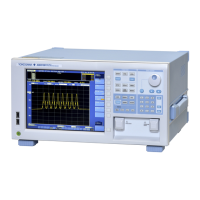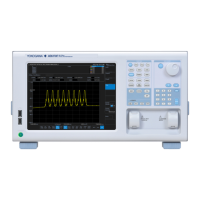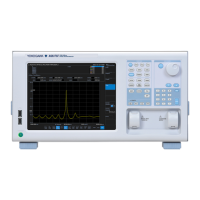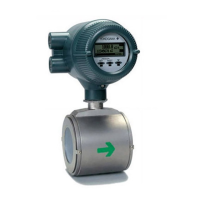3-27
IM AQ6370D-01EN
Preparing for Measurement
3
4
5
6
7
8
9
10
11
App
Index
3.9 Important Points During Measurement
Types of Optical Fibers
The instrument can use single mode optical fibers with core diameters of 5 to 9.5 μm,
and multimode (GI) optical fibers with core diameters of 50 and 62.5 μm. Functions may
be limited or restricted depending on which type of optical fiber is used. The table below
shows which of the typical types of fiber may be used and the limitations on their use.
Limitations on Wavelength Resolution
The maximum wavelength resolution for the instrument is 0.020 nm, which is only
obtainable when using a single-mode optical fiber with a core diameter of 9.5 μm or less.
As shown in Table, the maximum wavelength resolution decreases when optical fibers
with thicker core diameters are used.
Setting a resolution value finer than those shown in the table below will simply result in
an inaccurate measurement level without improving resolution.
Optical fibers with a thick core diameter are especially useful for inputting spatial light for
measurement, but they have poor resolution.
Choose the best type of optical fiber for your particular application.
Note that the instrument is designed for input through optical fiber only. It will not work
with inputs that do not pass through optical fiber, such as direct input of a gas laser
beam to the optical input connector, or bonding an LED to the optical input connector. It
is important to note that optical spectrum measurements taken through such inputs are
completely unreliable.
For spatial light measurements, input the spatial light to the optical fiber and from the
optical fiber to the instrument. A variety of adapters are available for this purpose.
Summary of usable optical fiber types and usage limitations
Optical Fiber Type Obtained Wavelength Absolute Level
Resolution (in nm) Accuracy
Type Core Diameter
SM 5 0.020 NG
SM 9.5 0.020 OK
GI 50 0.050 NG
GI 62.5 0.050 NG
SI 50 0.050 NG
SI 80 0.100 NG
SI 100 0.200 NG
SI 200 0.500 NG
SI 400 1.000 NG
SI 800 2.000 NG

